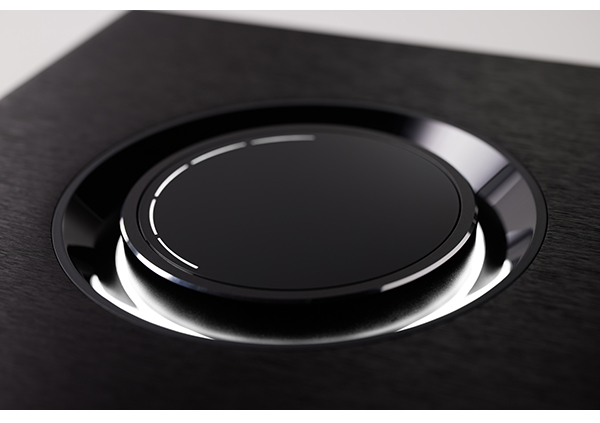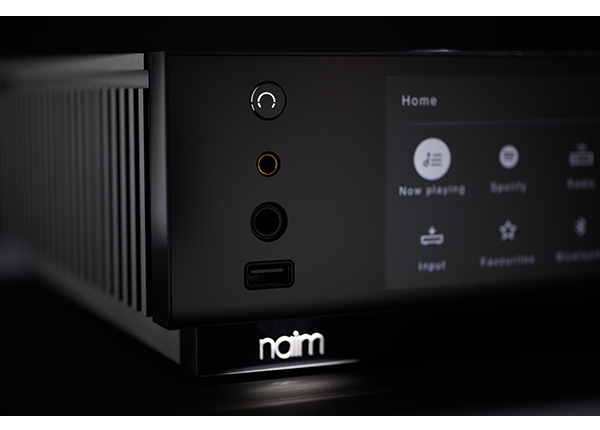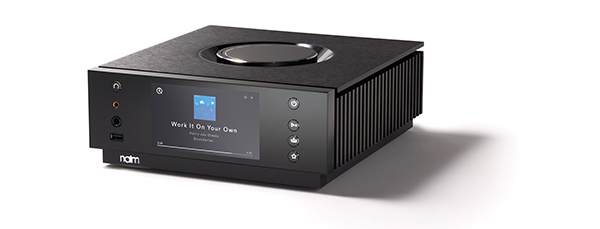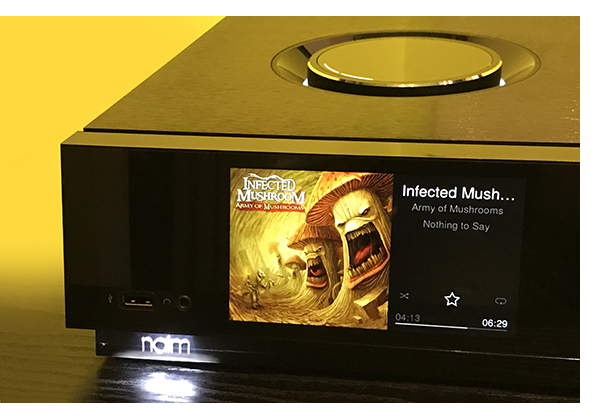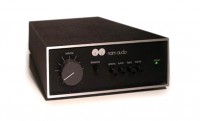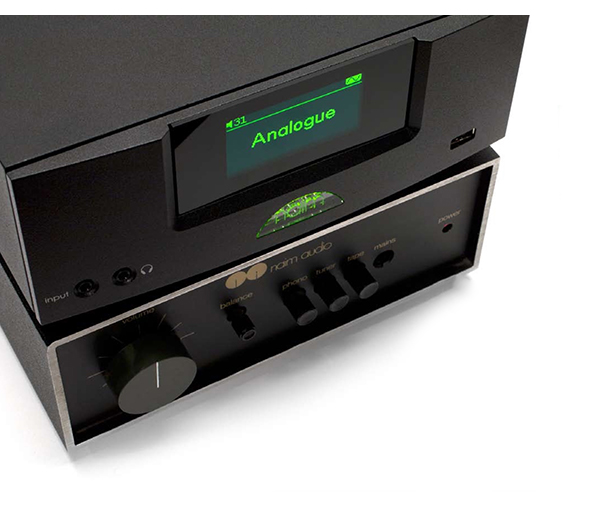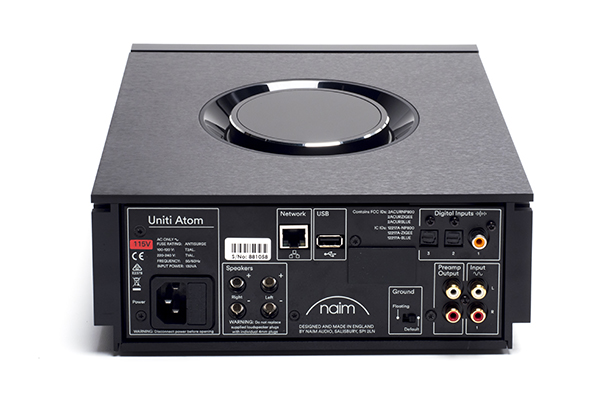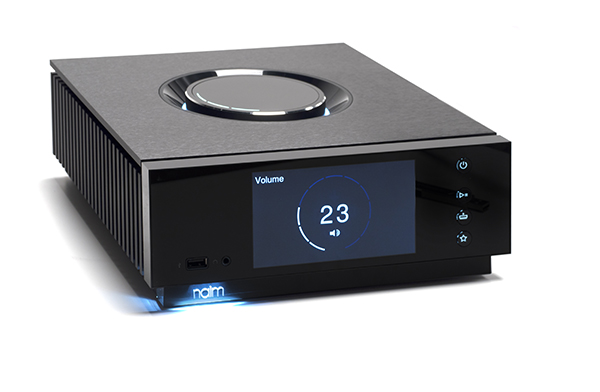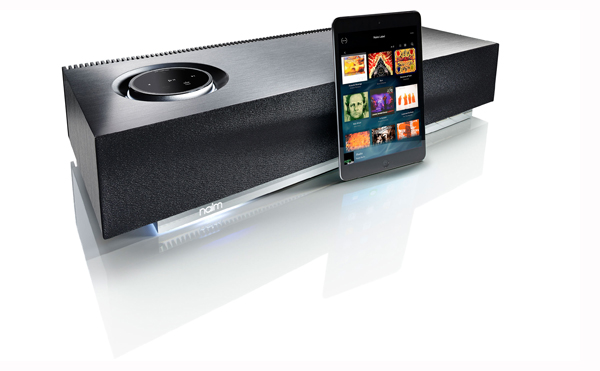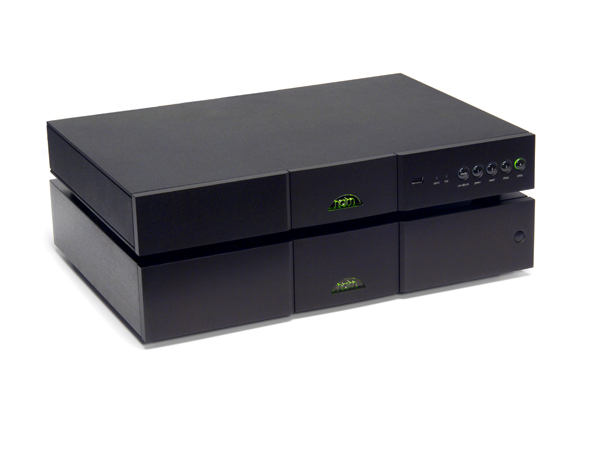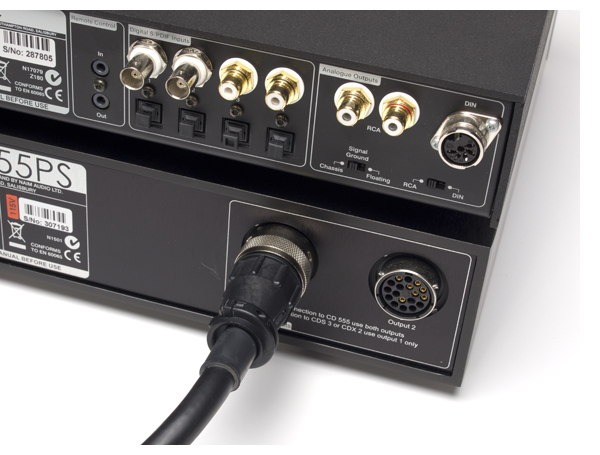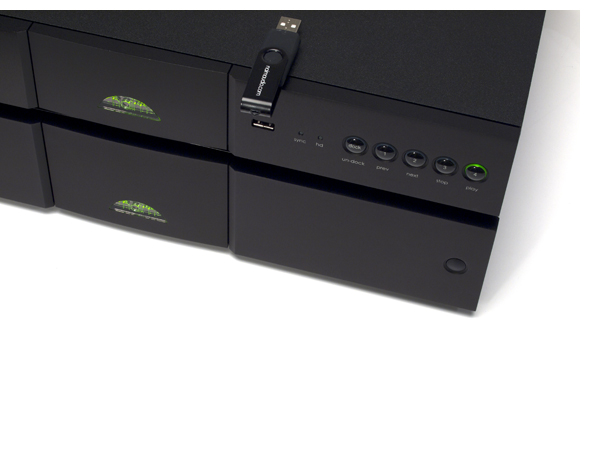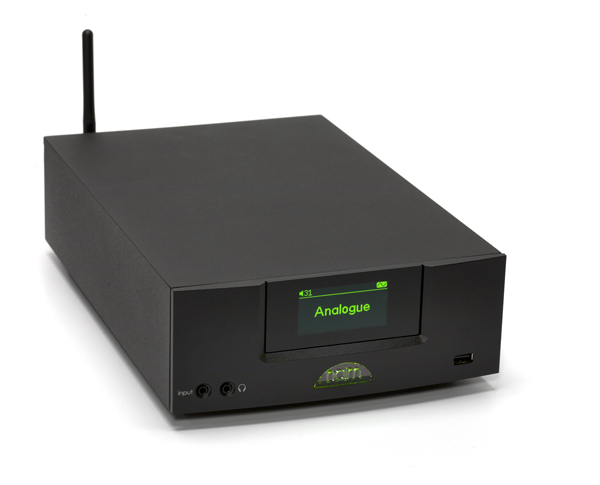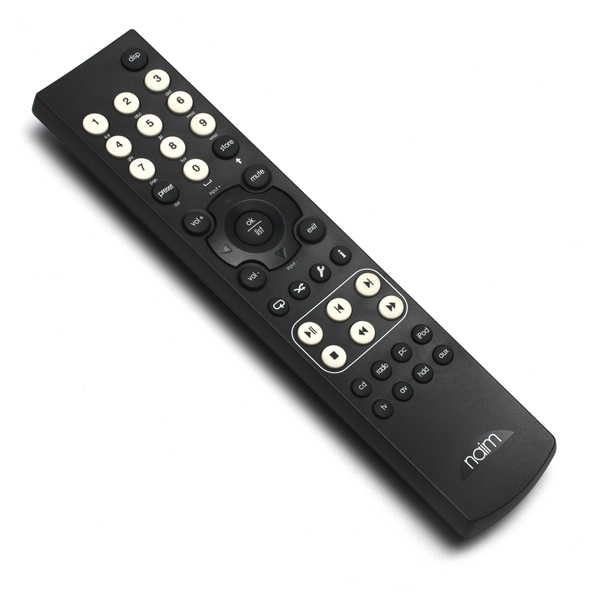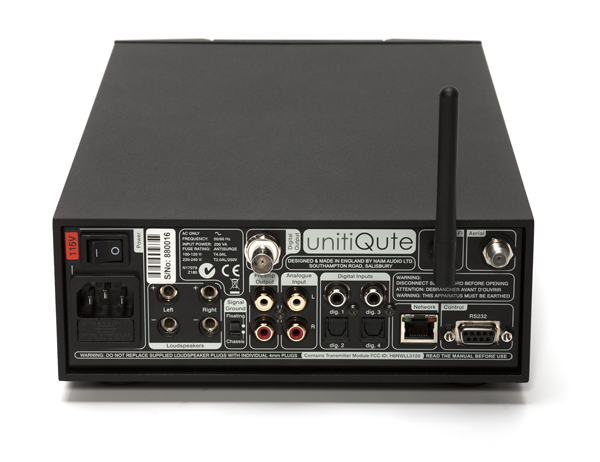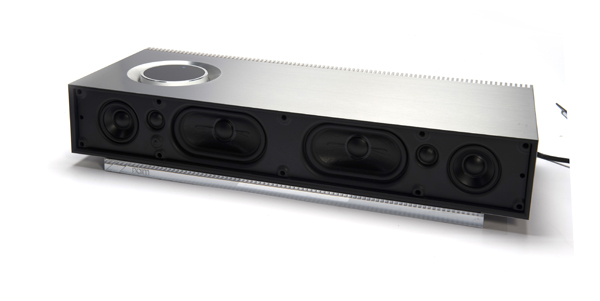 The hifi press was abuzz last year over Naim Audio’s massive Statement stack: an amplifier and preamplifier capable of over 700 watts per channel with an equally huge price tag that is in Aston Martin territory. However, being the clever engineers that they are, the folks from Salisbury had something equally compelling and more approachable at the Munich High End show – the Mu-so. Standing alone in the Naim room, the Mu-so was introduced rather quietly, but every time we checked it was mobbed with onlookers.
The hifi press was abuzz last year over Naim Audio’s massive Statement stack: an amplifier and preamplifier capable of over 700 watts per channel with an equally huge price tag that is in Aston Martin territory. However, being the clever engineers that they are, the folks from Salisbury had something equally compelling and more approachable at the Munich High End show – the Mu-so. Standing alone in the Naim room, the Mu-so was introduced rather quietly, but every time we checked it was mobbed with onlookers.
This elegant tabletop system features a plethora of style cues, with the polished case, clad in sculptured black grille material, a clear acrylic base and a single multifunction control on top. Sure, you can use the app or the remote control, but this begs to be touched and interacted with. The Brits have outdone style leaders Bang & Olufsen this time – the Mu-so is as understatedly elegant as the Bentley Continental that Naim also happens to supply the hifi system for.
Queuing up Florence + the Machine’s latest disc hints at the Mu-so’s capabilities, filling the living room with her sultry, luscious voice in a way that suggests a pair of Quad 57s. Airy and much bigger than the small enclosure suggests. Moving to more rocking faire, a quick playlist of classic Little Feat proves that the Mu-so can rock with the best of them, its 450 watts of power and six bespoke drivers handling the low bass line in “Long Distance Love” with ease. The only remaining question is how you will interface with Mu-so. And perhaps whether to stick with the standard black grille, or swap for the optional Burnt Orange or Deep Blue.
Convenient Controls
The user has several interface options. The four-inch recessed disc on the top left of the unit enables several functions. The outer edge of the wheel is silver in color. The center is an obsidian black touch-screen from which simple, white, lighted controls emerge from the dark. When plugged in, the default view is a simple, lighted power symbol. Once touched, lights around the edge of the circle cycle indicate the status of the power-up process.
Additional controls surface from the darkness when Mu-so is ready to play, giving a user the option of selecting Naim iRadio or an external input. Pushing on either option activates that functionality. When pressing the input button to choose an external source, repeated presses select UPnP, USB/iPod, or Bluetooth inputs. Three lighted sections of light at the top of the wheel activate in turn as the touch screen cycles among the choices.
Depending on the input source, the Mu-so also makes available other touch controls to advance tracks, play, pause and more. It’s nice to see only what’s useable, and not a lot of other control options that have no impact in a given mode. The disc acts like a volume control when twisted to the right or left, and lights around the circumference of the wheel light up corresponding to changes in volume, temporarily commandeering the input lights and others around the edge to indicate the full volume range. All of this is easy to do up close and personal or via the included remote or free iOS and Android apps from Naim.
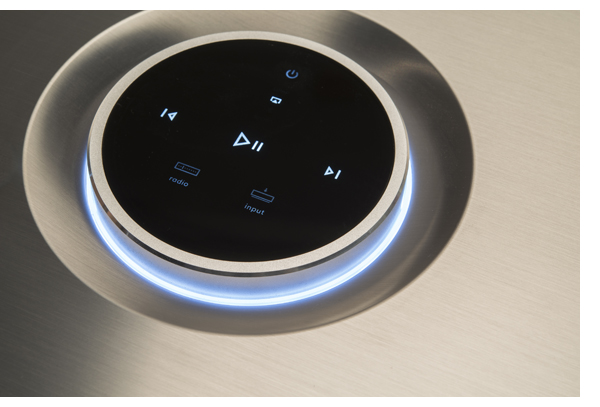
Simple Setup
Naim offers detailed instructions on every aspect of Mu-so setup in the included manual; for the sake of brevity, this review will hit only the highlights of the process. Even without touching the manual, though, I find it highly intuitive to get the Mu-so up and running. Naim has produced an excellent installation video that you can watch here: https://www.naimaudio.com/mu-so-support-simulator .
As a first step, when a location for Mu-so is decided, be sure to head into the iOS or Android app and select whether Mu-so is within 25cm of a rear wall or not. The selection allows the Mu-so to self-optimize sonically for its location and avoid bass loading when too close to a rear wall. After selecting the appropriate toggle, it’s still worth moving the Naim backwards and forwards a bit and do some tuning with your own ears.
With that done, a recessed area on the underside of the unit has three physical connections to make. First, Mu-so’s included power cord must be connected. Secondly an Ethernet socket enables a direct connection to an internet connection, although a wireless connection serves equally well. Finally, an optical input offers a hard-wired connection to complement other wireless streaming options.
The side of the Mu-so enables a few other input options. There’s a standard USB cable connection and a 1/8-inch analog input. Finally, a small, multi-color capable, LED status indicator delivers a dizzying array of information about the unit status and setup process. Depending on the color, and referring to the Mu-so manual, the LED informs the owner about status of internet connection, firmware updates, and other items. Simplicity is a good thing.
When attempting to pair an iPhone with the Mu-so, the first question asked on the iOS app setup screen is the color of the status LED. Clicking on the corresponding toggle, and with only a few additional touches on the iPhone screen, Mu-so and iDevice are fully paired. The process takes only a few seconds, and works seamlessly.
With the needed connections made, Mu-so offers playback via Bluetooth, Spotify, Airplay, internet radio and others. While all the wired and wireless playback options work very well through the Mu-so, much of my testing, a Mac Mini delivered the bits via Airplay. Whether exporting music to the Mu-so using iTunes, jRiver, or Roon, each came through with ease.
Super Sound
As it turns out, this little box packs a lot of surprises. From the get-go, the sonic balance of the Mu-so proves enjoyable. As with other Naim products I’ve heard over the years, the sound is plenty detailed, and a bit to the warmer side making long-term listening sessions fatigue free. Regardless of input choice, the Naim makes the best use of the digital signal.
While soundstaging prowess is inherently limited by a single-box design, the height and width of the sonic wall portrayed by the Mu-so remains surprisingly huge. Because of the perceived size, some guests visiting my home while the Mu-so played between my larger reference speakers made the assumption that the bigger boxes were responsible for playback.
Vocal reproduction is very good as with the rest of the midrange. On tracks like k.d. Lang’s “Tears of Love’s Recall” vocal crescendos lack grain or sting, while portraying the power of the performance.
Strengths and Scrutiny
The Mu-so is a really slick system that is fun to use. At $1,500 there’s a lot of capability and a lot of value packed into a small enclosure. After living with it in my home for some time, and trying it in different rooms which don’t have a quality sound system of their own, the Mu-so proves an addictive piece of kit.
A potential buyer should be aware of some caveats, however. Music fans desiring to approximate the left-to-right, and back-to-front soundstage of a realistic performance will be better served with a full Naim system and speakers.
Mu-so is certainly no slouch in the sound department. I find the sonic balance very enjoyable for long listening sessions. Naim did a great job creating the versatile Mu-so, but there are a few sonic compromises that should be expected from a one-box unit.
Mu-so is designed to fill a room with high quality sound, and equally importantly, offer a plethora of input and digital playback options. If one member of the house prefers streaming music via Bluetooth from an iPhone, another prefers to stream radio over the internet, and another prefers to connect directly via USB from a computer, each person gets exactly what they want given the Mu-so’s extreme flexibility. Also, the Mu-so’s elegant and modern look will fit well into any room without drawing a lot of attention to itself.
If the Mu-so’s strengths appeal to you, do yourself a favor and head to your local Naim dealer to check it out. As a one-box solution from a company with a long-standing history of great gear, that Mu-so does amazing things as expected. –Rob Johnson
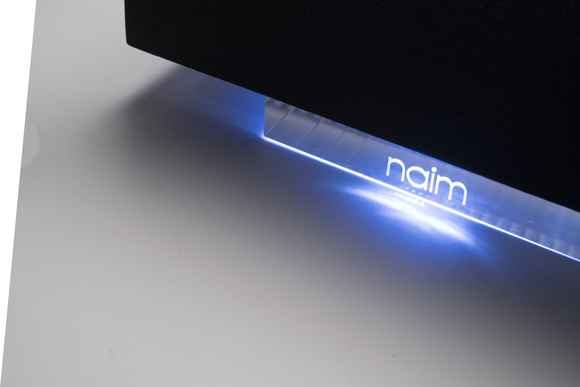
Additional Listening
Much like the iPod, one-box hifi is a rapidly developing area of the hifi world. About six years ago, we were blown away by the Bowers and Wilkins Zeppelin, and there have been a number of challengers, both more and less costly. Naim has chosen to take the high road, going after the stratosphere of the market – with excellent success. My personal favorite has been the now discontinued Meridian F80, which sported a $3,000 price tag.
The Mu-so eclipses my former one-box reference in every way, albeit with a larger footprint. The extra speakers and power really come in handy, and I can’t stress strongly enough that placement with this device is critical to get it to really rock. The wrong EQ settings and casual placement will leave you cold, but set it up properly and spend ten minutes placing it in just the right spot to get enough bass reinforcement, and you will be highly impressed.
I spent a lot of time using the Mu-so as the home theater system in my bedroom, using it to both stream music from Tidal via an iPad and provide movie sound, hardwired, via an Apple TV. In this situation, the Mu-so proved highly impressive, offering up room-filling sound in a 12 x 14 foot room, placed on a dresser, just below a 65-inch TV set.
I must confess a bias in favor of Naim’s timeless design, so I can’t really be objective here. I love the look of the Mu-so and feel that they’ve even outdone Devialet in the control elegance department. That part will be up to you. But for the music and movie lover who doesn’t want a rack of gear, yet still wants high quality sound, Naim’s Mu-so is pretty awesome and worth a trip to your Naim dealer for an audition. – Jeff Dorgay
Naim Mu-so
MSRP: $1,500
www.naimaudio.com
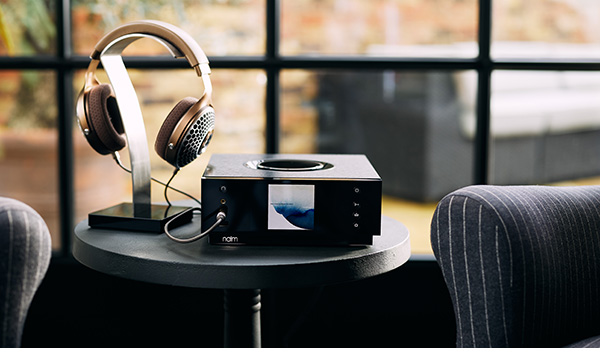 Naim Audio announces this morning that their latest addition to the Uniti series is now available. The Uniti Atom Headphone Edition premiers with an MSRP of $3,290.
Naim Audio announces this morning that their latest addition to the Uniti series is now available. The Uniti Atom Headphone Edition premiers with an MSRP of $3,290.



